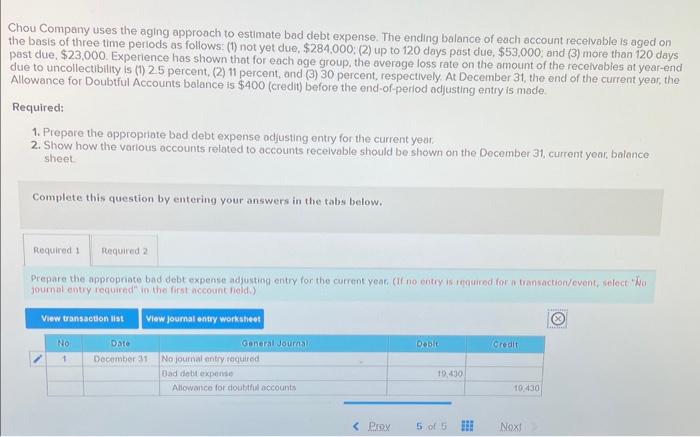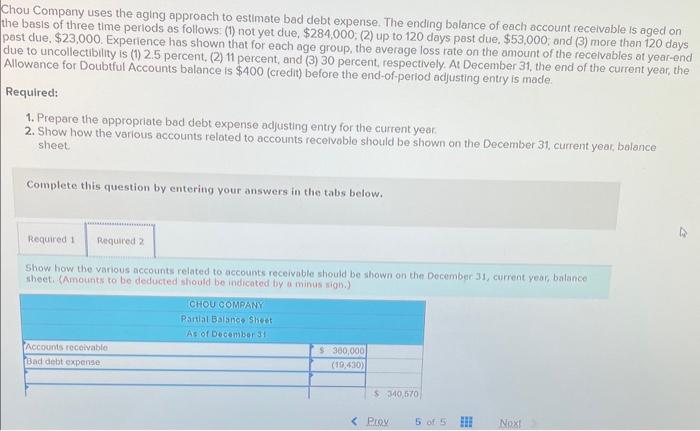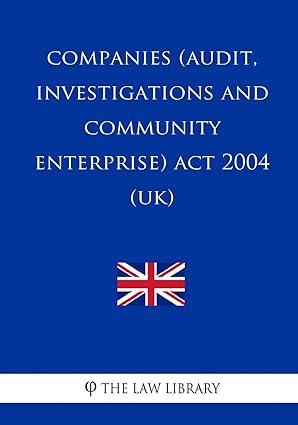Chou Company uses the aging approach to estimate bad debt expense. The ending balance of each account recelvable is aged on the basis of three time periods as follows: (1) not yet due, $284.000:(2) up to 120 days past due, $53,000 : and (3) more than 120 days past due, $23,000. Experience has shown thot for each age group, the average loss rate on the amount of the recelvables at year-end due to uncollectibility is (1) 25 percent, (2) 11 percent, and (3) 30 percent, respectively. At December 31 , the end of the current year, the Allowance for Doubtful Accounts balance is $400 (credit) before the end-of-period adjusting entry is made. Required: 1. Prepare the appropriate bad debt expense odjusting entry for the current year: 2. Show how the various accounts related to accounts recelvable should be shown on the December 31 , current year, balance sheet Complete this question by entering your answers in the tabs below. Prepare the appropriate bad debt expense adjustind entry for the current yeor. (If no entiy is ripquirod for a transaction/eventerelect tho joumblentry requared in the first account field.) Chou Company uses the aging approach to estimate bad debt expense. The ending balance of each account recelvable is aged on the basis of three time periods as follows: (1) not yet due, $284,000; (2) up to 120 days past due, $53,000, and (3) more than 120 days past due, $23,000. Experience has shown that for each age group, the average loss rate on the amount of the recelvables at year-end due to uncollectibility is (1) 2.5 percent, (2) 11 percent, and (3) 30 percent, respectively. At December 31 , the end of the current year, the Allowance for Doubtful Accounts balance is $400 (credit) before the end-of-period adjusting entry is made. Required: 1. Prepare the appropriate bad debt expense adjusting entry for the current year 2. Show how the various accounts related to accounts recelvoble should be shown on the December 31 , current year, balance sheet Complete this question by entering your answers in the tabs below. Show how the various accounts related to accounts receivable should be shown on the December 31 , current year, balance. sheet. (Amounts to be deducted shoold be indicated by a minus sign.)








